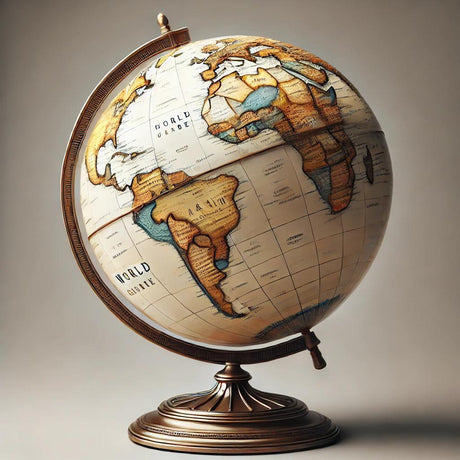 Globes provide a three-dimensional representation of Earth and come in a variety of sizes. To choose the right globe, it helps to understand how their sizes are measured.
Globes provide a three-dimensional representation of Earth and come in a variety of sizes. To choose the right globe, it helps to understand how their sizes are measured.
The size of a globe is determined by its diameter—the straight line passing through its center from one edge to the other. This measurement directly affects the level of detail displayed. The circumference of a globe—the distance around it—can be calculated using this formula: Circumference=π×Diameter.
Examples of Standard Globe Sizes:
- 9-inch Diameter: With a circumference of approximately 28.3 inches (9 × 3.1416), this size is compact and great for desktops or small spaces.
- 12-inch Diameter: Measuring a circumference of about 37.7 inches (12 × 3.1416), this is the most common size, ideal for educational and general use, such as decorative.
- 16-inch Diameter: At a circumference of 50.3 inches (16 × 3.1416), this size is perfect for detailed study and as a centerpiece at home, in libraries or offices.
- 24-inch Diameter: Featuring a circumference of 75.4 inches (24 × 3.1416), this is a large, statement-sized globe for significant visual impact in a home or professional display.
When selecting a globe, consider the purpose, space, and portability. Smaller sizes, like 9 inches, are excellent for portability or decoration, while 16-inch or 24-inch sizes provide better cartographic detail. A 12-inch globe suits most desks, whereas a 24-inch globe needs dedicated floor space. Larger globes are heavier and may require stationary placement.
Understanding how globes are measured by diameter and circumference ensures you choose a size that fits your needs perfectly. Explore our Standard Globe Sizes for more insights and examples at Ultimate Globes.




